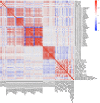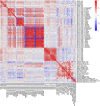Comparison of visual performance between monofocal and multifocal intraocular lenses of the same material and basic design
- PMID: 32968124
- PMCID: PMC7511318
- DOI: 10.1038/s41598-020-72473-x
Comparison of visual performance between monofocal and multifocal intraocular lenses of the same material and basic design
Erratum in
-
Author Correction: Comparison of visual performance between monofocal and multifocal intraocular lenses of the same material and basic design.Sci Rep. 2020 Nov 5;10(1):19565. doi: 10.1038/s41598-020-76803-x. Sci Rep. 2020. PMID: 33154534 Free PMC article.
Abstract
To compare the visual performance of a monofocal intraocular lens (IOL) (ZCB00) and a multifocal IOL (ZMB00) of the same material and basic design, we evaluated postoperative parameters at 10 weeks after the last surgery in cataract patients who underwent bilateral ZCB00 or ZMB00 implantation from December 13, 2010, to July 29, 2019, with the right and left lenses implanted within 3 months of each other. The study enrolled 2,230 eyes of 1,115 patients. The monofocal group comprised 904 eyes of 452 patients (72.3 ± 6.8 years; females/males, 268/184), and the multifocal group comprised 1,326 eyes of 663 patients (67.0 ± 7.8 years; females/males, 518/145). Contrast sensitivity (4.0/2.5/1.6/1.0/0.7 degrees), contrast sensitivity with glare (1.6/1.0/0.7 degrees), and the VFQ-25 score for driving at night were significantly better in the monofocal group (p < 0.00068, Wald test). Uncorrected intermediate/near visual acuity and near spectacle independence were significantly better in the multifocal group (p < 0.00068, Wald test). The two IOL groups had different characteristics in terms of contrast sensitivity, night-time driving, uncorrected intermediate/near visual acuity and near spectacle independence.
Conflict of interest statement
The authors declare no competing interests.
Figures




Similar articles
-
One-year outcomes with new-generation multifocal intraocular lenses.Ophthalmology. 2008 Sep;115(9):1508-16. doi: 10.1016/j.ophtha.2008.04.017. Epub 2008 Jun 5. Ophthalmology. 2008. PMID: 18538402 Clinical Trial.
-
Comparison of visual performance of multifocal intraocular lenses with same material monofocal intraocular lenses.PLoS One. 2013 Jun 28;8(6):e68236. doi: 10.1371/journal.pone.0068236. Print 2013. PLoS One. 2013. PMID: 23840836 Free PMC article.
-
[Clinical observation on visual quality in patients implanted with monofocal and multifocal aspheric intraocular lenses].Zhonghua Yan Ke Za Zhi. 2010 Aug;46(8):686-90. Zhonghua Yan Ke Za Zhi. 2010. PMID: 21054991 Clinical Trial. Chinese.
-
Multifocal versus monofocal intraocular lenses for age-related cataract patients: a system review and meta-analysis based on randomized controlled trials.Surv Ophthalmol. 2019 Sep-Oct;64(5):647-658. doi: 10.1016/j.survophthal.2019.02.012. Epub 2019 Mar 6. Surv Ophthalmol. 2019. PMID: 30849425
-
[Multifocal intraocular lenses--an assessment of current status].Klin Monbl Augenheilkd. 1993 Jul;203(1):19-33. doi: 10.1055/s-2008-1045645. Klin Monbl Augenheilkd. 1993. PMID: 8411889 Review. German.
Cited by
-
Comparison of visual outcomes in patients with cataracts and high myopia after implantation of a zonal refractive multifocal or diffractive bifocal intraocular lens.Sci Rep. 2024 Nov 4;14(1):26654. doi: 10.1038/s41598-024-76020-w. Sci Rep. 2024. PMID: 39496667 Free PMC article.
-
Comparison of visual performance between bifocal and extended-depth-of-focus intraocular lenses.PLoS One. 2023 Jul 13;18(7):e0288602. doi: 10.1371/journal.pone.0288602. eCollection 2023. PLoS One. 2023. PMID: 37440544 Free PMC article.
-
[Myopic multifocal duet implantation for the correction of presbyopia and myopia].Ophthalmologie. 2023 Jul;120(7):759-762. doi: 10.1007/s00347-022-01692-6. Epub 2022 Jul 14. Ophthalmologie. 2023. PMID: 35925353 German. No abstract available.
-
Comparison of bilateral implantation of an extended depth of focus lenses and a blend approach of extended depth of focus lenses and bifocal lenses in cataract patients.BMC Ophthalmol. 2023 Nov 21;23(1):476. doi: 10.1186/s12886-023-03228-1. BMC Ophthalmol. 2023. PMID: 37990306 Free PMC article. Clinical Trial.
-
Satisfaction Rate After Laser Correction of Presbyopia (Presbyond) Among Patients Aged 40 Years and Older in Taif, Saudi Arabia.Cureus. 2024 Jan 23;16(1):e52776. doi: 10.7759/cureus.52776. eCollection 2024 Jan. Cureus. 2024. PMID: 38389611 Free PMC article.
References
Publication types
MeSH terms
LinkOut - more resources
Full Text Sources

